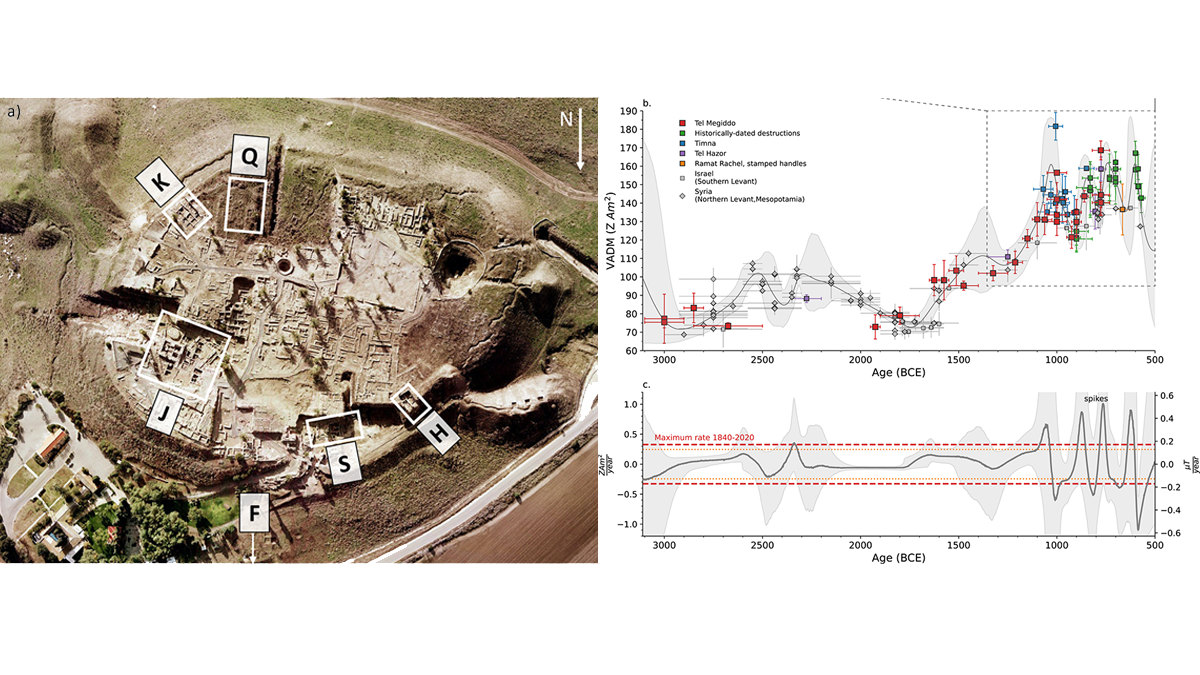Editors’ Highlights are summaries of recent papers by AGU’s journal editors.
Source: Journal of Geophysical Research: Solid Earth
The rate of change in the magnetic Earth field as well as the intensity values in the Levantine Iron Age Anomaly (LIAA) are the highest measured to date and underline the fact that the strength of the Earth’s magnetic field changes in an unpredictable manner. Precise information on how the field has changed in the past has been obtained by direct absolute intensity measurements of the geomagnetic field.
Shaar et al. [2022] present a rare collection of radiocarbon-dated stratified archeological material from Tel Meggido, Israel, compiled with other archeomagnetic data from the Levant and Upper Mesopotamia to provide a super detailed geomagnetic field intensity curve between 3000 and 550 BCE. The curve revealed that magnetic field rate changes in the Holocene were at least twice as fast as the fastest changes observed since our direct measurements starting in the 1840s. This impressive new data set, integrated with existing data, makes a compelling case for the robustness of the LIAA necessitating the need for updating our thinking of geomagnetic features.
Citation: Shaar, R., Gallet, Y., Vaknin, Y., Gonen, L., Martin, M. A. S., Adams, M. J., & Finkelstein, I. (2022). Archaeomagnetism in the Levant and Mesopotamia reveals the largest changes in the geomagnetic field. Journal of Geophysical Research: Solid Earth, 127, e2022JB024962. https://doi.org/10.1029/2022JB024962
—Agnes Kontny, Associate Editor, JGR: Solid Earth

